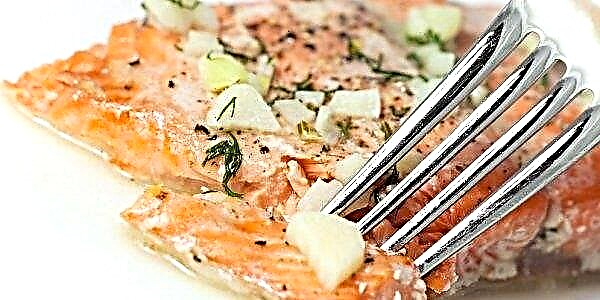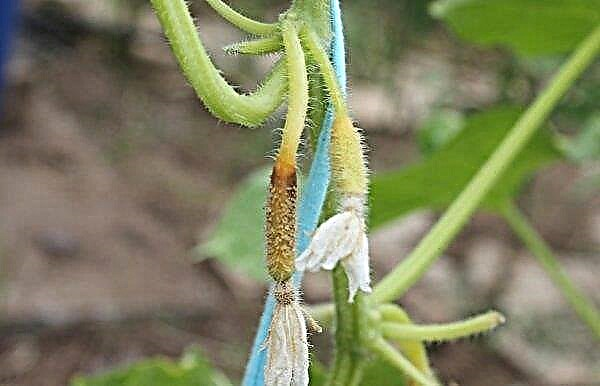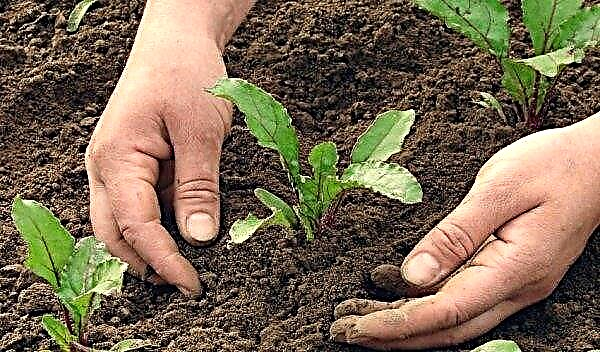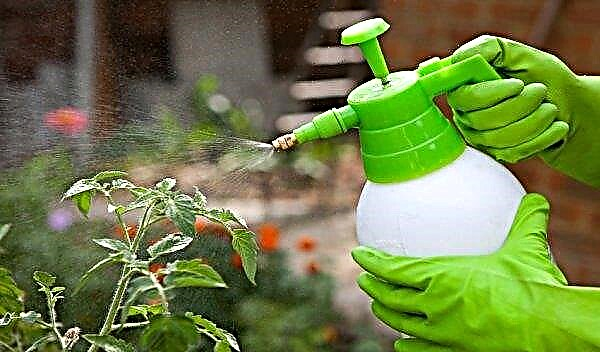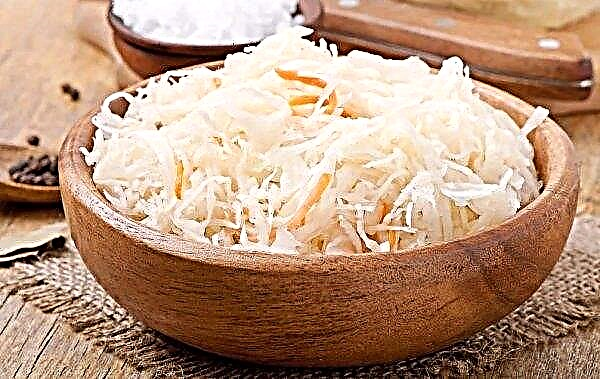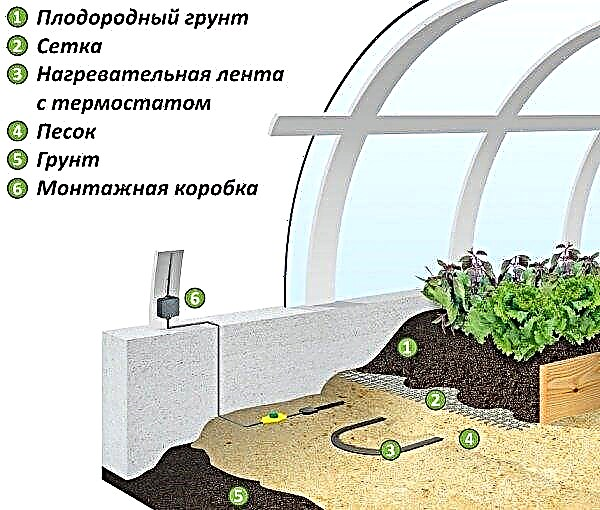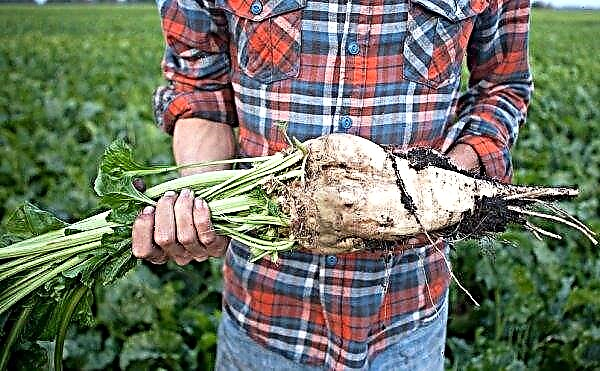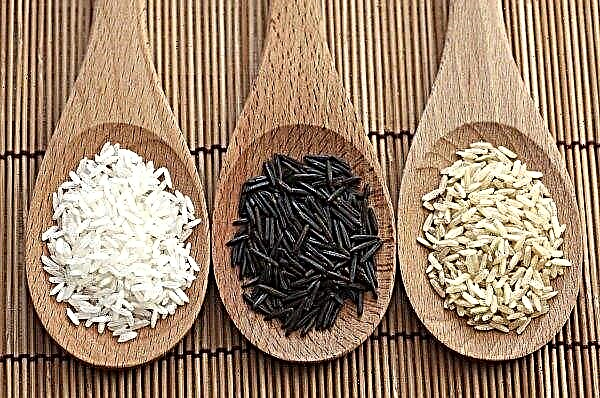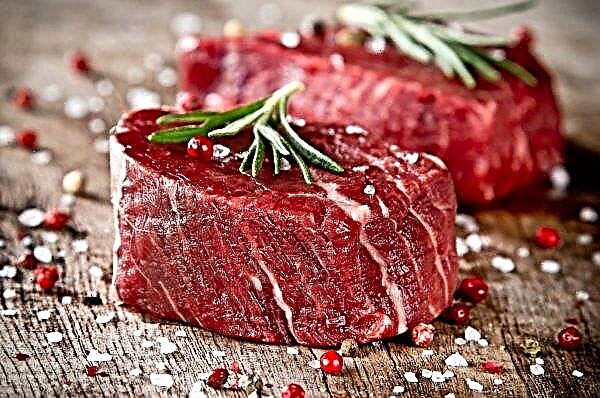Kandy is one of the most common and effective types of bee feeding, which allows feeding insects in a difficult time for them, and if necessary it can be a therapeutic agent. About what types of candies are, and how to cook such dressing at home, will be discussed in the proposed material.
What is kandy
Kandy is a special carbohydrate top dressing in the form of powdered sugar and honey dough with the inclusion of various additives. Top dressing is made in the form of cakes, the thickness of which varies from 2 to 3 cm, the weight is 1 kg. The flat cakes are then wrapped and placed in the hives to prevent drying out, but if there is no urgent need to feed the bees, then hermetically sealed candies can be stored in the refrigerator until the deadline.

The main purpose of Kandy is winter top dressing and stimulation of an increase in bee colonies in the spring and autumn. Feeding the bees with the product is carried out monthly, but provided that the insects do not have other supplies for the winter.
Kandy species for bees
Nutrition options depend on the additives included in it. Based on this, candi are:
- Without additives.
- With pollen. Used crushed dressing. It has the highest protein content. Restores carbohydrate and protein balance. Stimulates brood cultivation in cases when there is no blooming honey plants or nectar is not possible due to bad weather.
- With nosemate. A bee drug containing antibiotics is used. Such candi is used in the treatment of nosematosis in bees.
- Energetic. The purpose is to restore the vitality of bees after wintering.
- Vitaminized with protein. Purpose - replenishment of stocks in early spring.
- With thymol. Application - prevention of nosematosis, ascoferosis and rotten diseases.
- With tinctures of herbs. Mint, yarrow, calendula, St. John's wort are used. The purpose is to strengthen the immunity of bees.
- With cobalt chloride. It is used to increase the protein and carbohydrate supply of bees, accelerate the synthesis of cyanocobalamin.
Did you know? The very first beekeepers on Earth are the ancient Egyptians who began to do this over 7 thousand years ago.
Product Benefits
Kandy promotes the speedy recovery of insects after winter, has a beneficial effect on the honeycomb with eggs, larvae and nymphs, and also blocks the development of diseases in the hive. In spring and autumn, top dressing helps the bee family accumulate vitality, stimulates the bees to work.

How to make candi for bees at home
When preparing top dressing, some key requirements of beekeeping should be considered.
The percentage of the main components:
- icing sugar - 73.8%;
- honey - 26%;
- water - 0.18%;
- vinegar - 0.02%.
Did you know? An ordinary bee, weighing 0.1 g, can fly with a load of honey weighing 0.06 g or nectar — 0.035 g
Honey should be melted (in a water bath) and brought to a temperature of +45 ... + 60 ° С. Powdered sugar should be of the same composition, grains no larger than 0.2 mm.  It is allowed to grind sugar into powder using a coffee grinder. Classical preparation: powdered sugar is poured into melted honey, everything is mixed, flat cakes are formed, which are then packaged in bags.
It is allowed to grind sugar into powder using a coffee grinder. Classical preparation: powdered sugar is poured into melted honey, everything is mixed, flat cakes are formed, which are then packaged in bags.
Consider the procedure for preparing the simplest feeding with powdered sugar and honey:
- Take 0.25 kg of honey (it is better to give the advantage to natural light, since such a product has minimal crystallization).
- Pour honey in a stainless or enameled container (a cup or saucepan is suitable).
- Place the container in a water bath or heat on a stove to + 60 ° C. If steam appears - stop heating immediately.
- Prepare 0.75 kg of high quality sugar.
- Grind sugar in a coffee grinder to a powder state.
- Mix the obtained icing sugar with honey.
- Add a drop of vinegar and 1 tbsp. l water.
- Knead the dough by hand.
- Form a cake (2-3 cm thick).
- Place the cake in a bag of polyethylene (parchment paper) or wrap it with two layers of gauze.
Feeding bees is usually done in this way to prepare their family for wintering.
Important! Addition to candi fruit or what-or wood (birch, maple) juices are prohibited — for bees, these juices are too acidic and also have many substances that insects cannot digest.
On inverted sugar
First, let's figure out what inverted sugar is. This is a syrup consisting of glucose and fructose, obtained under the influence of heat and citric acid.
To prepare Kandy on inverted sugar, you first need to get such sugar:
- Pour 175 ml of water into the pan, add 225 g of sugar and 0.5 g of citric acid.
- Mix everything until completely dissolved.
- Place the container with the contents on fire.
- Stir continuously, bring to a boil, and stop stirring.
- Reduce the heat to a minimum and continue cooking for another 20 to 120 minutes: the longer the cooking, the more “amber” the color of the product.
- With a decrease in the volume of syrup by one third of the original, you need to pour 60 ml of water (this is done if the sugar is cooked for more than 30-40 minutes).
- Remove the container with contents from the fire and leave to cool to a temperature of +50 ... + 70 ° C at room temperature (if the syrup will be used immediately).

Percentage of fertilizing components:
- icing sugar - 70%;
- inverted sugar - 29.8%;
- water - 0.1%;
- vinegar - 0.03%.
The procedure for obtaining such top dressing is as follows (without specifying the amount of ingredients):
- Prepare high quality sugar and grind it in a coffee grinder to a powder state.
- In the chilled (or heated, if prepared previously) to a temperature of +50 ... + 70 ° С syrup pour the obtained powdered sugar.
- Add water and vinegar.
- Knead the dough by hand.
- Form cakes, which are then placed in bags.
With flour
Such top dressing is usually given in February, when the bees begin to deficit bee bread.
Percentage of components:
- sugar - 74%;
- flour - 24%;
- water - 2%.
The cooking algorithm (without specifying the amount of ingredients) is as follows:
- In a stainless or enameled container, bring the water to a boil.
- Dissolve sugar in boiling water.
- Pour flour into the resulting syrup.
- Cook over low heat, stirring constantly until cooked.
- Knead the dough until hardened.

With milk powder
The algorithm for preparing top dressing with milk powder is as follows:
- 10 kg of powdered sugar is prepared.
- In a water bath, 3 kg of honey is melted.
- Melted honey is poured into icing sugar (you can and vice versa - iced powder is poured into honey).
- Add 1 kg of milk powder and 2-3 tbsp. water.
- Candy dough is prepared from the resulting mixture, which is then packaged in bags.
Did you know? To get 100 g of honey, a bee needs to fly around 1 million flowers.
How and when to feed Kandy bees
Ready top dressing is placed in the hive directly on the frame. At this point, insects have good access to the candi from below and from the sides.
Before placing in the hive, top dressing turns into one of the materials (optional):
- A plastic bag with small holes (if there are no holes initially, they should be made).
- Multilayer gauze.
- Parchment paper (in this case, holes must also be made in it).

For the winter period, a 3-5 kilogram “cake” of candi will be enough for one bee family. If Candy is laid for medical purposes or with medications, the dose of feeding is reduced by 1.5–2 times. If top dressing was stored in the refrigerator, then before being placed in the hive, it must be warmed up, minimally - to a temperature of + 15 ... + 25 ° C, optimally - + 35 ... + 37 ° C.
Important! In order to avoid crystallization of kandy in Omshanik (insulated room for wintering bees), the temperature should be constantly maintained.
The time for feeding bees depends on the season. Experienced beekeepers advise:
- In winter Feeding to do as necessary. Once a month, you should give one cake, if it is found after some time undernourished - replace with a new one.
- In the springtime feeding should be protein-carbohydrate, at this time, bees need to be fed either twice as often, or you can put twice as large a portion.

